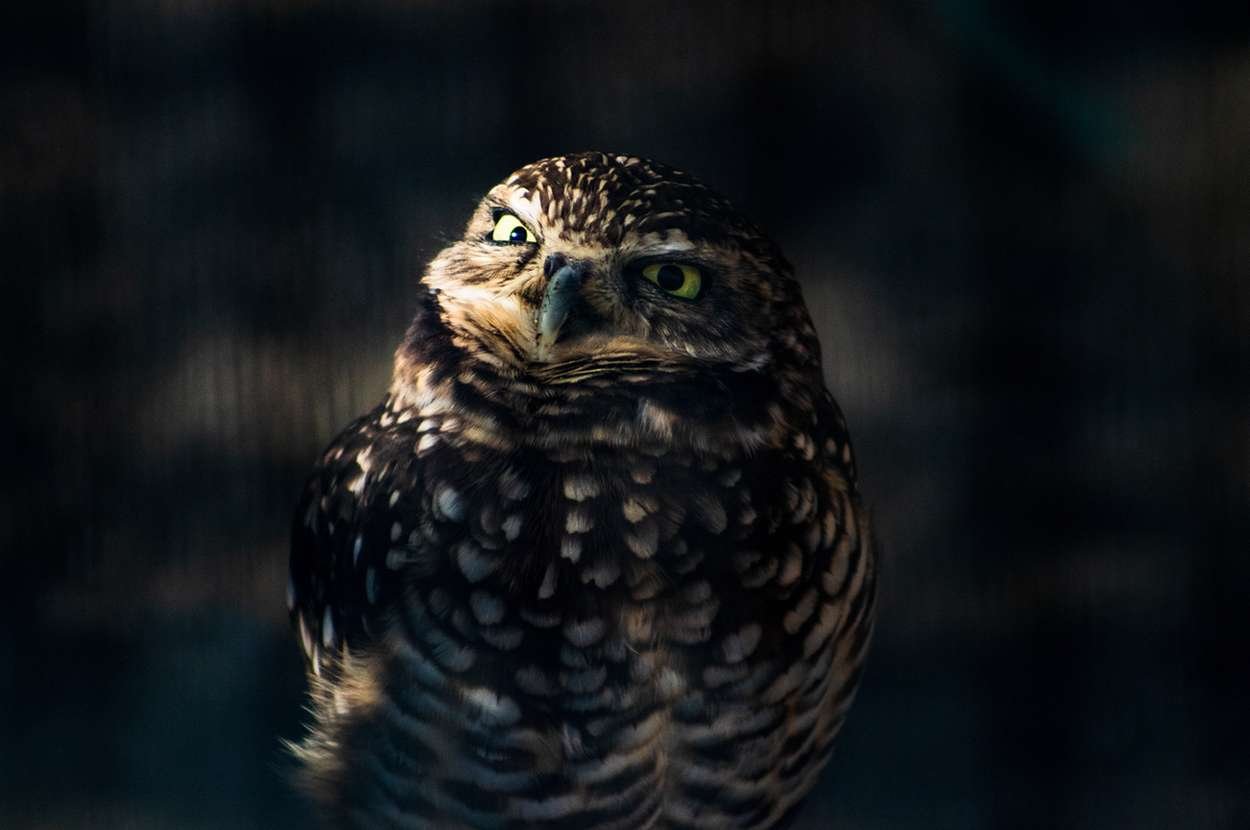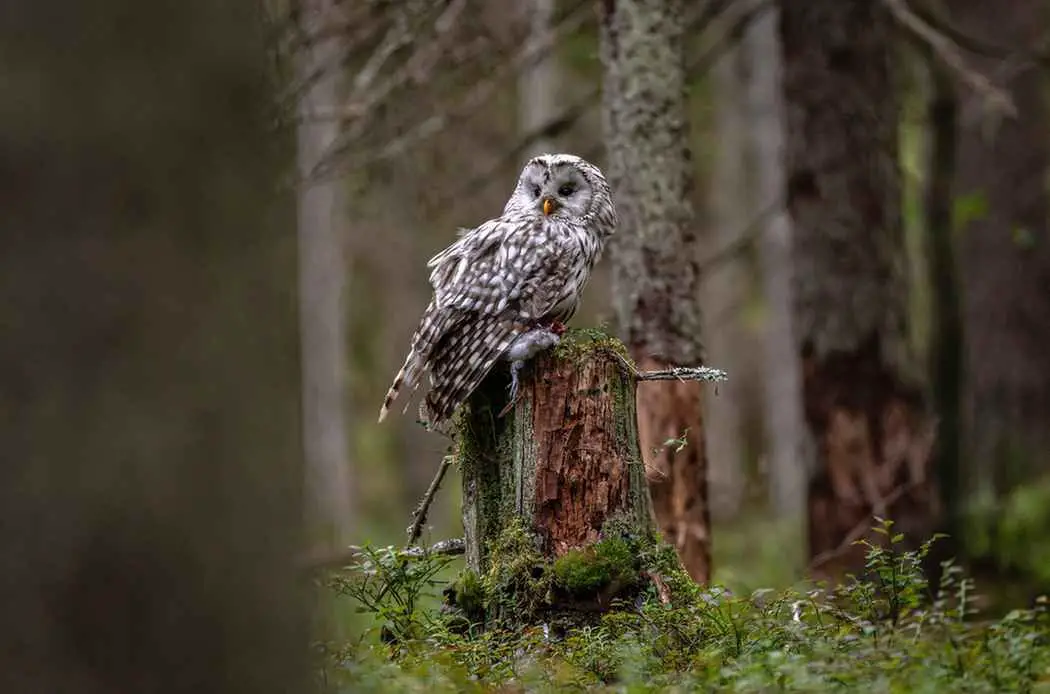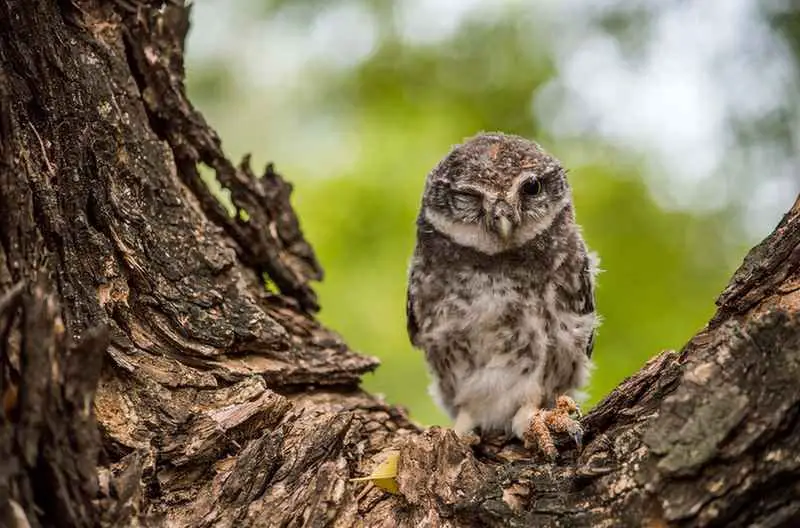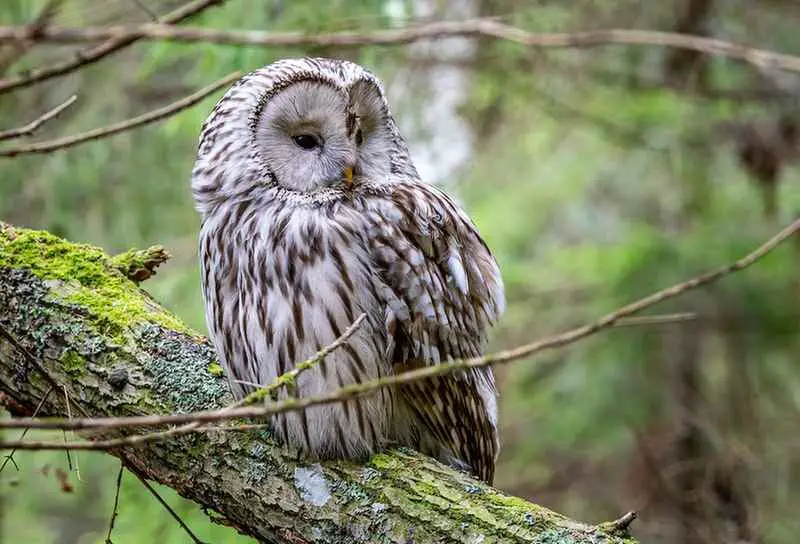What Sound Does An Owl Make?
You might have trouble seeing an owl, but you’ll definitely hear one!
There are a variety of calls made by several species of owls. Just like humans. Humans don’t really sound similar whenever they speak. Some owls are loud and talkative, while others are more reserved and barely make any noise at all.
Toot, toot is a common way for people to describe the sound that an owl makes, which is the sound that owls make as they are flying. When the other members of the bird family hear an owl, they are frequently startled and will quickly flee the area.
The reason for this is due to the fact that owls are animals that are active at night. This indicates that they are more active in the evening and night-time hours. Therefore, when other animals hear an owl make a noise at night, it can lead them to become startled and drive them to flee the area.
Listen Great Horned Owl (Bubo virginianus) Call
Credit: Lance A. M. Benner, XC301237. Accessible at www.xeno-canto.org/301237.
Hooting and shrieking are two more forms of sounds that owls are capable of producing. The owl’s beak produces a hooting sound that is higher in pitch than its other calls. The sound should serve as a cautionary signal to any other birds that may be nearby.
Screeching, on the other hand, is a low-pitched sound that originates from the owl’s throat. When two owls are attempting to communicate with one another, they make this particular type of sound.
Hooting and shrieking produce noises that are comparable to one another, yet in quite distinct ways. Screeching employs the vocal folds that are located at the front of the throat, whereas hooting utilises the vocal folds that are located in the back of the neck.
The pitch of each sound is distinct from the others. Both hooting and shrieking increase in volume as the animal approaches its prey, with hooting having a higher pitch than screeching. The specific pitch at which an owl hoots has little impact on the bird’s ability to hunt; rather, it has an impact on how humans understand the sound.
If you wish to be heard above the hooting of an owl, you should make your own call quieter and lower in pitch than the owl’s own hoot.
When they hoot, certain owls, such as the great horned owl, make a sound that sounds like they are saying “who-o-o, who-o-o.” There is even an owl that has a raspy call that resembles a rattlesnake.
Some owls hiss, click their tongues, whistle, or babble. However, when owls become enraged, they all hiss and bite their beaks or snap their tongues and make a hissing sound.
Owls use a variety of vocalisations for a variety of purposes. Owls make their distinctive hooting sounds to stake their claim to a region and to attract a partner. They “speak” in order to warn potential predators and court mates, as well as to call in additional owls.
This is the call of a male barn owl: whee-tuh…whee-tuh… whee-tuh…,” when trying to attract the attention of a potential mate. A female spotted owl will make a quiet whistling sound whenever she departs or comes to its nest.
Sounds of various owls:
Barn Owl: Barn Owls don’t really hoot like many of the owls. However, they do offer a variety of calls to choose from. There are a total of five primary classifications of calls, including shrieks, snores, hisses, chirrups and twitters, and other calls.
Listen Western Barn Owl (Tyto alba) Call
Credit: Manceau Lionel, XC659876. Accessible at www.xeno-canto.org/659876.
The purring call, the advertising call, the distress cry, and the high-pitched scream are all included in the category of screams. The advertising call is a drawn-out gargling scream, the distress call is a series of drawn-out loud screams, and the warning call is a scream (quiet scream used by male to attract female to a nest site).
Tawny Owl: The call of female Tawny owl is sharp ‘ke-wick’ whereas the call of male Tawny owl is wavering ‘hoohoo’ .
Female Little Owl: The call of female little owl is Short, repetitive ‘woop’ or sharper ‘kiew kiew’.
Barred Owl: The barred owl is the most vocal species of owl found in North America. They chatter at all hours of the day and night, making sounds like hooting, squealing, screeching, whistling, trilling, grumbling, and even barking. However, they are most well-known for a call that sounds like, “Who cooks for you… who cooks for you-all?” Bigger owls have deeper voices than smaller ones.
Listen Barred Owl (Strix varia) Call
Credit: wisconagus, XC692307. Accessible at www.xeno-canto.org/692307.
Great Horned Owl and the Screech Owl: The tops of the heads of certain owls, such as the great horned owl and the screech owl, are covered in tufts of feathers. Although they have the appearance of ears, they are really used by the owl to communicate verbally. When the tufts are in the upright and forward position, they communicate, “Stay out of my territory,” whereas when they are in the pressed down and back position, they communicate, “Aw, be kind.”
Listen Great Horned Owl (Bubo virginianus) Call
Credit: JAYRSON ARAUJO DE OLIVEIRA, XC735425. Accessible at www.xeno-canto.org/735425.
Burrowing Owl: If you are lucky enough to call the area along the southern border of the United States or Mexico home, you get to spend the entire year mingling with the irresistibly cute Burrowing Owl.
Listen Burrowing Owl (Athene cunicularia) Call
Credit: David Ricardo Rodríguez-Villamil, XC524491. Accessible at www.xeno-canto.org/524491.
The primary call of this species is a rather straightforward coo-coooo, coo-coooo, followed by a soft little wheeze at the very end. Sometimes the owls may use sound as a form of defence, making noises that are similar to those made by rattlesnakes in order to ward off any threats to their valuable burrows.
Because the sounds of shrieking and screeching made by other young birds are similar to those made by infant owlets, it can be difficult to tell which young birds are actually owlets and which are other sorts of birds.
Studying the distinctive sounds made by each species that you are attempting to identify is the most effective technique to differentiate between these sounds. You could also try to identify the bird by a process of elimination based on factors such as the time of day, geographical location, and other factors.



